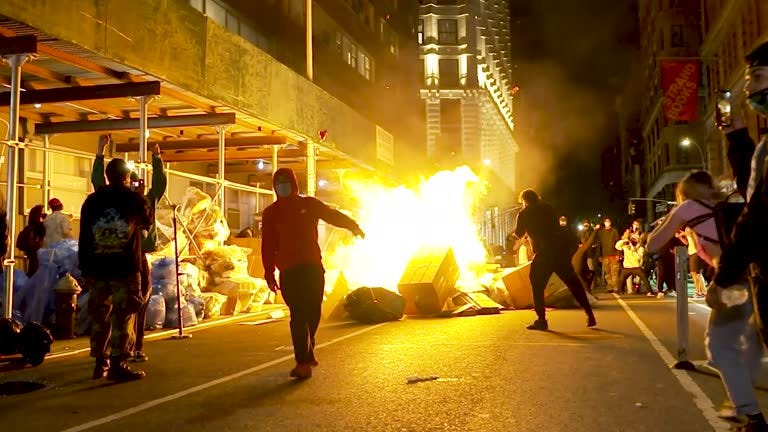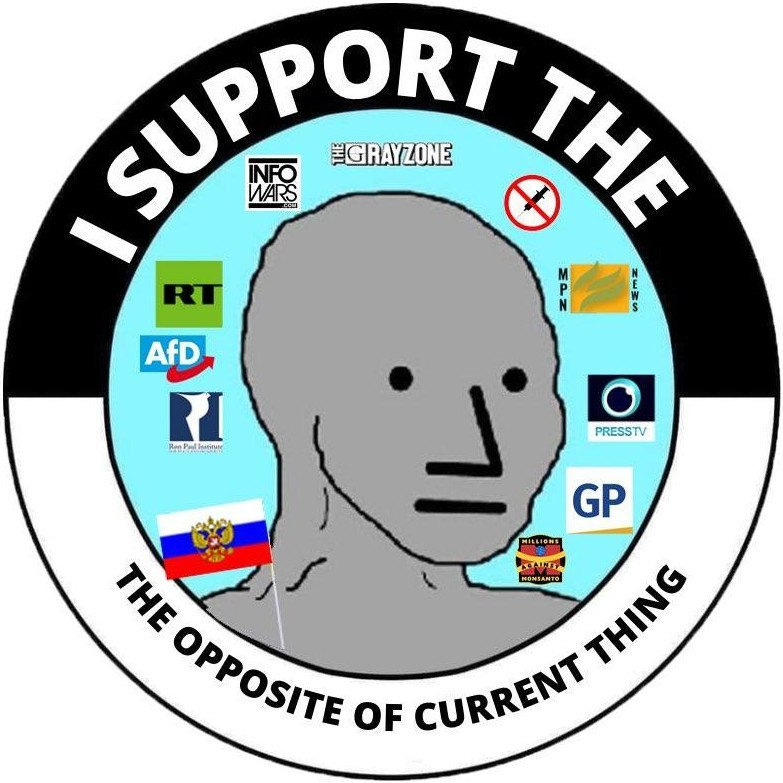Astral Swarming and Mimetic Violence
Towards an anatomy of Thing Currents
In forcing everyone out of face-to-face contact and into “remote” and “digital” simulacra of contact, Covid-19 lockdowns were the inflection-point at which Anglophone culture tipped definitively from print-first to digital-first. One of the most perceptive memes to emerge during that era was the “Current Thing”: a term that denotes whatever stance, issue, or hot-button topic the digital discourse has converged upon as the “current thing” this week:
Sometimes something becomes Current happens in direct contradiction to whatever that was the week before; sometimes it happens in the negative, in a spirit of pure and protean oppositionality:
Earlier this year I took a sabbatical from being extremely online, for about a month. Since I returned to the digital townhall, I’ve found Current Things hit differently. It’s not exactly that I’m less invested, because if you’re online it’s basically impossible not to get sucked in. But since my sabbatical I’ve seen several such Things come and go, and have found myself increasingly interested more in the pattern (the Currents, if you will) than the content of any given Thing.
My sense is that even though we’re a few years on from Covid, we stilll don’t really have fine-grained language for what a Current Thing is - even though, as phenomena, they’re older than Covid and have been growing in frequency and importance for two decades now. This matters, because in a digital-first culture the characteristic forms of digital public discourse are how politics happens. Current Things aren’t some kind of evil miasma called “wokeness” that has infected an otherwise sound public discourse and can be dispelled with Facts And Logic. They’re the new normal, and we’re all going to have to get used to it. So I want to try and sketch a few of my preliminary observations on these phemomena in the hope of provoking disagreement or refinement from anyone else who is further along in thinking about this topic.
First off, I want to acknowledge a debt to the pioneering work of Katherine Dee at default.blog. Dee is always ahead of the digital-theory curve, and recently made a persuasive case that the internet is a real place, a kind of astral realm or Fairyland:
When I use “astral” or “Fairyland” in what follows, it’s in a broadly similar sense to hers: that is, I’m thinking of the internet as both a real place in its own right, and also as a parallel dimension that now overlays “IRL” almost everywhere. But importantly, as Dee observes, the rules of Fairyland are very different to those of “IRL” or indeed of print discourse - and it’s easy to become irretrievably lost.
So the following first attempt at an anatomy of Fairyland’s emotional riptides is in service to the question: does it have to be this way? I don’t know the answer but I think it’s worth asking.
I’ll group my observations under five headings, as follows:
Current Things foreclose neutrality
Current Things used to be Left-coded, now they’re Right-coded
It’s not a Current Thing, it’s a Thing Current
In the astral realm, Thing Current posts you
Toward cognitive sovereignty among the Thing Currents
Keep reading with a 7-day free trial
Subscribe to Mary Harrington to keep reading this post and get 7 days of free access to the full post archives.





